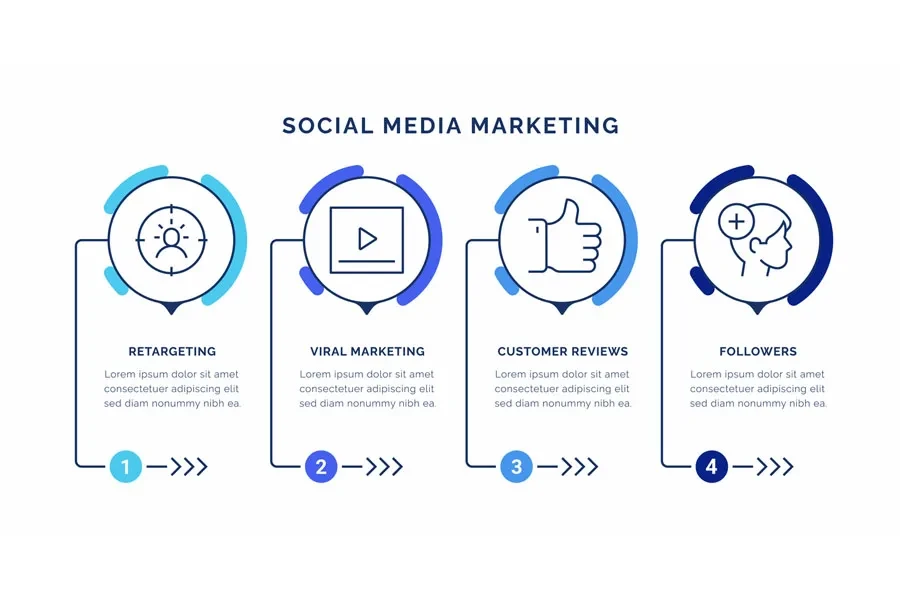Creating content is a brilliant marketing strategy. However, generating new pieces of content can become overwhelmingly challenging, requiring time and resources.
To tackle this challenge, many businesses are leveraging content repurposing, which entails reusing existing content elements into different content types. According to a 2023 study by Semrush, 42% of marketers and businesses reveal that repurposing content is key to content marketing success.
Therefore, this guide will look at what this content strategy entails, provide tips on repurposing content correctly, and give examples you can duplicate to make content creation effortless. Let’s get started.
Table of Contents
What is content repurposing?
Benefits of content repurposing
How to repurpose content the right way
Examples of content repurposing
Conclusion
What is content repurposing?
Also known as content recycling, content repurposing is the practice of transforming existing content into a new format and reusing it on the same platform or somewhere else. For instance, you can repurpose a podcast episode into a blog or turn a long YouTube video into short clips for Instagram or TikTok.
Benefits of content repurposing
Reusing content is an effective way to create content for your audience. The benefits of repurposing content include the following:
1. Save time
You can save time by utilizing already-published content. Experts recommend dedicating 10 hours per week to content repurposing. This rate is nowhere near the sheer amount of time you can spend creating multiple pieces of content from scratch.
2. Save money while increasing production

Production costs, specifically video, are expensive. If you decide to work with a professional team to make a well-polished branded video, charges can start from US $1,500 to an astronomical US $20,000 per minute. With repurposing, you can save on these costs with a monthly subscription fee on content repurposing tools, which cost roughly between US $25 and US $199.
3. Expand your reach
Reusing content across different outlets is a way to diversify the people you reach online. Being present on different platforms expands your reach, allowing your content to impact a wider audience. This can also increase the possibility of web users sharing your content online.
4. Improve engagement
Studies show engaged customers spend 40% to 60% more than ordinary customers. You can diversify your content to increase engagement rates, which is possible with repurposing.
5. Helps with search engine optimization

SEO is a key factor in digital marketing that helps your website rank higher on Google and other search engines. With content repurposing, you can boost your brand’s visibility when multiple pieces of content target the same keyword.
How to repurpose content the right way
Repurposing content is not all about copying and pasting content on various platforms. There is the correct way to do it. Here are the best practices when repurposing content:
1. Identify high-performing blog posts
Finding the best-performing topics is a great way to spot content repurposing opportunities. If you have been making content for a while, your website or channel has useful data to help you spot these topics.
Use the Google Analytics tool and browse to see the pieces of content with the highest impressions, viewership, and engagement. Check to see if the topics you have discussed in each have something in common. Doing this helps you know what kind of content interests your audience.
If, for instance, it is a blog about “Top Christmas Home Decor Ideas,” you can repurpose it into video content for viewers to learn about last-minute holiday decoration ideas.
2. Repurpose evergreen content

Evergreen content is high-quality content that never gets outdated and stays relevant to audiences over an extended period of time. This kind of content is not time-sensitive, as it can be viewed or read at any time of the year and gives value to the target audience.
A topic like “Tips for Successful Weight Loss” is an example of evergreen content. This is because it can be consumed anytime and potentially receive high traffic. The topic is also able to stay relevant for a long time.
Therefore, go through your catalog and see if you have such content pieces and repurpose them into fresh content. If you don’t have new content for your audience, having evergreen content can be extremely helpful.
3. Update old content

Old content can present a content repurposing opportunity when you don’t have new content to give your audience. This is where you can take a step to update the content and give it a refresh.
Therefore, before creating new content, inspect whether the content you have requires an update. If it requires one, here are two things you can do:
- Recreate the piece and publish it: Create new content based on what’s current and publish it.
- Update the original content: If you have an old blog post and it’s ranking well on search engines, make updates without changing SEO elements like the link URL or meta titles and keywords.
4. Choose the right format and platform for the piece

Selecting the right format and platform for your content is key. As you make your choice, start by conducting audience research. This helps you understand your consumers’ preferences, so you know which social media channels different audiences use.
From there, it becomes easy to pick the relevant formats that align with the preferences of your target audience. For example, if you have a huge audience on Facebook and your original content is a blog post, you can repurpose it into infographics with key takeaways for the social post.
5. Optimize the content for SEO
Make sure that the repurposed content is optimized for search engines. It’s through search engine optimization that your content is discoverable on Google.
Use relevant keywords, meta tags, and descriptions to boost the content’s search engine rankings. This way, it becomes easy for new audiences to find your content.
In addition, consider platform-specific features to help your SEO efforts as you publish repurposed content on social media platforms. For instance, Instagram and X (formerly Twitter) hashtags can act as keywords that assist social media users find your content.
Examples of content repurposing
There are a lot of different ways to repurpose content. Below are some practical examples.
1. Turn blog posts into infographics

The main takeaways from your blog posts can be repurposed into infographics.
Infographics are useful for audiences that love learning. You can also use them to summarize content. The infographic can be included within the blog post or published on social media.
2. Turn webinar recordings into multiple content pieces
Webinars are usually packed with educational and valuable information, making it appropriate to repurpose the content into different formats for different channels.
You can turn the webinar into a blog or several articles if it covers multiple topics. Alternatively, divide the webinar recording into short videos and share them on social media.
Quotes from guest speakers can also be extracted and used in blog posts or other forms of written content.
3. Turn blog posts into emails

Useful takeaways from your long-form article can generate around two to three emails for your audience. However, this can depend on the amount of information you have shared in the article. You can then send them to your target audience as newsletters.
4. Turn blog posts into videos
Blog content can be recreated into engaging videos. Use platforms like YouTube or social media to share informative or entertaining videos that convey the same message as your written content. You can use animations, slide shows, or talking head videos to present the information in a new format.
5. Compile e-books or guides

Your blog posts, articles, or other content can be transformed into comprehensive e-books or guides that you can host on platforms like Amazon Kindle or your website. This allows you to offer a more in-depth resource to your audience and use it as a lead magnet or premium content.
Conclusion
Repurposing is a great way to maximize your content production while minimizing content creation challenges such as time and resource intensity. It also helps you expand your content’s reach and improve engagement. With the tips in this guide, you can develop an effective content repurposing strategy that impacts your audience and achieves the best results for your business.




